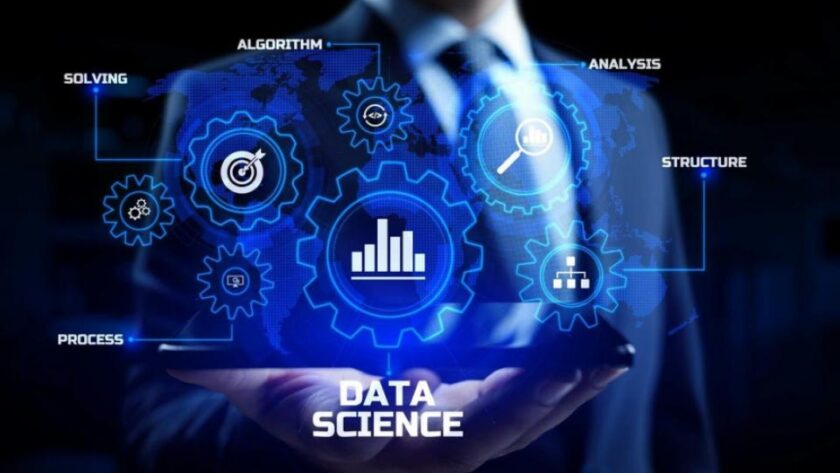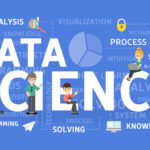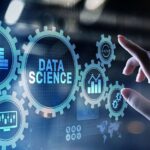In today’s interconnected world, data is being generated at an unprecedented rate. Every action we take online, every click, purchase, and transaction leaves a digital footprint, which contributes to the massive volumes of data being generated daily. This phenomenon has given rise to what we now refer to as “big data” — large, complex data sets that are too voluminous and intricate to be processed by traditional data-processing tools.
Big data, however, is more than just a collection of large data sets. It holds immense potential to transform industries, drive innovation, and provide valuable insights. By effectively harnessing this vast sea of data, organizations can make data-driven decisions, optimize operations, enhance customer experiences, and even predict future trends.
In this article, we will explore the concept of big data, the technologies that enable its analysis, and the various ways it is being used across industries. We will also discuss the challenges and ethical concerns associated with big data and how organizations can ensure they are making the most of its potential.
1. What is Big Data?
Big data refers to data sets that are so large or complex that traditional data-processing software is inadequate to handle them. It includes both structured data (such as databases) and unstructured data (such as text, images, and social media content) and is characterized by the “three Vs”:
- Volume: The sheer amount of data being generated. For instance, there are billions of devices, users, and applications constantly producing data in the form of transactions, social media interactions, sensor data, and more.
- Velocity: The speed at which data is generated and processed. Big data is often generated in real-time or near-real-time, such as social media posts, stock market transactions, or customer interactions.
- Variety: The diversity of data types and formats. Big data includes structured data (e.g., numerical data in spreadsheets), semi-structured data (e.g., XML files), and unstructured data (e.g., images, text, and videos).
There is also a fourth “V” that has been added to the definition of big data:
- Veracity: The quality and trustworthiness of the data. With the sheer volume and variety of data, ensuring that it is accurate and reliable is critical to making meaningful decisions.
The combination of these characteristics makes big data unique and powerful but also presents significant challenges for organizations attempting to extract value from it.
2. The Technologies Behind Big Data
To unlock the potential of big data, organizations rely on a variety of technologies designed to collect, store, process, and analyze these massive datasets. These technologies enable businesses to derive insights, identify patterns, and make informed decisions.
2.1 Data Storage and Management
One of the primary challenges with big data is storing and managing such massive volumes of information. Traditional databases and data storage systems are not designed to handle the scale of big data, which is where specialized storage solutions come into play:
- Distributed File Systems: Systems like Hadoop’s HDFS (Hadoop Distributed File System) and Amazon S3 allow data to be distributed across many servers or nodes, enabling the storage of enormous datasets without the risk of overloading a single machine.
- NoSQL Databases: Unlike relational databases that require a fixed schema, NoSQL databases (such as MongoDB, Cassandra, and Couchbase) offer flexible data structures that can store unstructured or semi-structured data, making them ideal for handling big data.
2.2 Data Processing and Analytics
Once big data is collected and stored, the next challenge is processing and analyzing it to extract meaningful insights. Traditional data processing tools often struggle with the scale and complexity of big data, but technologies like Apache Hadoop and Apache Spark have been developed to meet these demands:
- Apache Hadoop: An open-source framework that allows for the distributed storage and processing of large datasets across clusters of computers. Hadoop divides big data into smaller, more manageable chunks and processes them in parallel, making it faster and more efficient.
- Apache Spark: A fast and general-purpose cluster-computing system that extends Hadoop’s capabilities with in-memory processing. Spark is used for a variety of big data tasks, including machine learning, data streaming, and real-time analytics.
- Real-Time Data Processing: With technologies like Apache Kafka and Apache Flink, big data can be processed in real-time, allowing for immediate analysis and decision-making. This is particularly useful for applications that require real-time insights, such as fraud detection or traffic monitoring.
2.3 Data Visualization and Business Intelligence
Data visualization tools allow organizations to present the insights gleaned from big data in ways that are easy to understand and actionable. By turning raw data into charts, graphs, and dashboards, businesses can make informed decisions more quickly.
- Tableau, Power BI, and QlikView are some popular data visualization platforms that can be integrated with big data technologies to create interactive and visually appealing dashboards.
- Geospatial Analytics: For businesses that deal with location-based data, GIS (Geographic Information Systems) tools can visualize geographic patterns and insights from big data, enabling better decision-making for industries like logistics, urban planning, and retail.
2.4 Machine Learning and Artificial Intelligence
Machine learning (ML) and artificial intelligence (AI) are at the forefront of big data analytics. These technologies enable machines to learn from data, identify patterns, and make predictions without explicit programming.
- Predictive Analytics: Using machine learning algorithms, organizations can analyze historical data to forecast future trends. This is widely used in industries like retail for demand forecasting, in finance for risk assessment, and in healthcare for predicting disease outbreaks.
- Natural Language Processing (NLP): NLP techniques help organizations analyze and understand unstructured data, such as social media posts, customer reviews, and news articles. NLP is used for sentiment analysis, customer feedback analysis, and chatbots.
- Deep Learning: This subset of machine learning is particularly effective at analyzing large, unstructured data, such as images, audio, and video. Deep learning is powering applications like image recognition, self-driving cars, and voice assistants.
3. Applications of Big Data Across Industries
Big data has the potential to revolutionize almost every industry. Here are some notable applications across various sectors:
3.1 Healthcare
Big data is making a profound impact on healthcare by improving patient care, optimizing operations, and accelerating medical research.
- Personalized Medicine: By analyzing patient data, including genetic information, medical history, and lifestyle factors, healthcare providers can develop personalized treatment plans tailored to individual needs.
- Predictive Analytics: Big data allows for early detection of diseases and health risks by analyzing patterns in patient data. This enables healthcare professionals to intervene before conditions worsen, leading to better outcomes.
- Operational Efficiency: Hospitals and clinics are using big data to streamline operations, reduce wait times, and allocate resources more effectively.
3.2 Retail
Retailers are leveraging big data to understand consumer behavior, optimize supply chains, and improve customer experiences.
- Customer Segmentation: By analyzing customer data, retailers can segment their customer base and create personalized marketing campaigns that target specific demographics.
- Inventory Management: Big data helps retailers predict demand and optimize inventory levels, reducing costs and improving availability.
- Price Optimization: Retailers use big data analytics to adjust pricing in real-time based on factors like demand, competitor prices, and promotions.
3.3 Finance
In finance, big data plays a critical role in risk management, fraud detection, and investment strategies.
- Fraud Detection: By analyzing patterns of transactions and customer behavior, financial institutions can detect fraudulent activities in real-time, minimizing losses.
- Risk Assessment: Big data enables financial institutions to assess credit risk and predict market fluctuations, helping to make more informed lending and investment decisions.
- Algorithmic Trading: Data-driven algorithms are used in the stock market to analyze large volumes of financial data and execute trades based on patterns and trends.
3.4 Smart Cities
Big data is helping create smart cities by improving urban planning, traffic management, and public safety.
- Traffic Management: By analyzing real-time traffic data from sensors, cameras, and GPS systems, cities can optimize traffic flow, reduce congestion, and improve public transportation routes.
- Energy Efficiency: Big data helps manage energy consumption in real-time, allowing cities to optimize electricity usage and reduce waste.
3.5 Manufacturing
Manufacturers are using big data to optimize production processes, reduce downtime, and improve quality control.
- Predictive Maintenance: By monitoring machines and equipment in real-time, manufacturers can predict failures before they occur, minimizing costly downtime.
- Supply Chain Optimization: Big data helps manufacturers forecast demand, optimize inventory levels, and streamline the supply chain.
4. Challenges and Ethical Concerns
While big data offers significant benefits, it also comes with challenges and ethical concerns that must be addressed.
4.1 Data Privacy and Security
With large amounts of sensitive data being collected, there are increasing concerns about privacy and data security. Organizations must ensure that they comply with data protection regulations (such as GDPR) and implement robust security measures to protect against data breaches and unauthorized access.
4.2 Data Quality and Accuracy
Big data is often messy, unstructured, and incomplete. Organizations must invest in data cleaning and validation processes to ensure the data is accurate and trustworthy before making decisions based on it.
4.3 Ethical Use of Data
As data collection becomes more sophisticated, ethical concerns arise about how data is used. Organizations must ensure they are transparent in their data practices and respect individuals’ rights to privacy. This includes using data responsibly, avoiding bias in algorithms, and ensuring that data is not used to discriminate against certain groups.
5. Conclusion
Big data has the potential to revolutionize industries, improve operational efficiency, and provide valuable insights that drive innovation. From healthcare to finance, retail to manufacturing, organizations are leveraging big data technologies to enhance decision-making, optimize processes, and predict future trends.
However, to truly harness the power of big data, organizations must address the challenges associated with data privacy, quality, and security. By ensuring ethical use and leveraging the right technologies, businesses can unlock the full potential of big data, transforming it into a strategic asset that drives success in the modern world.




